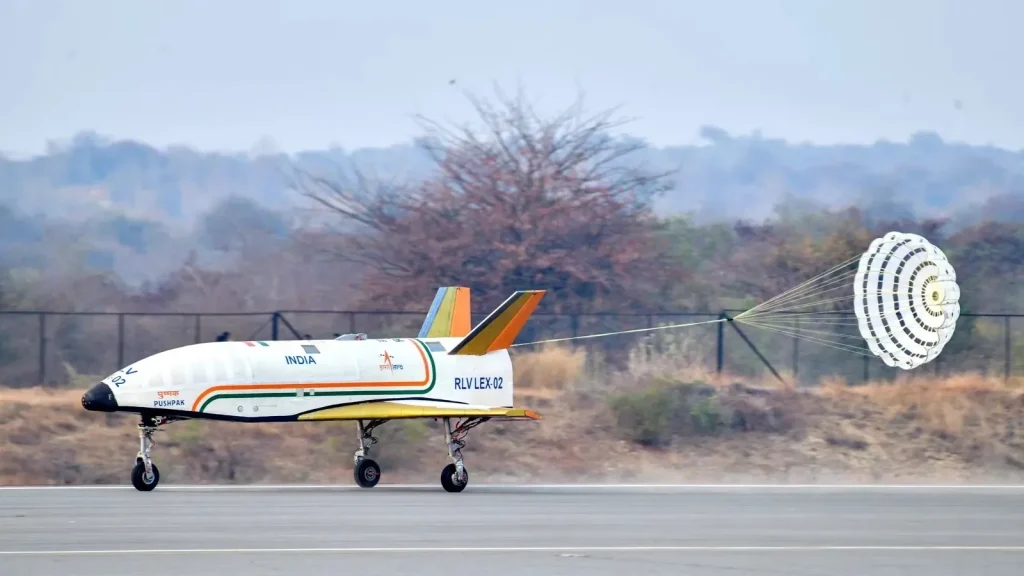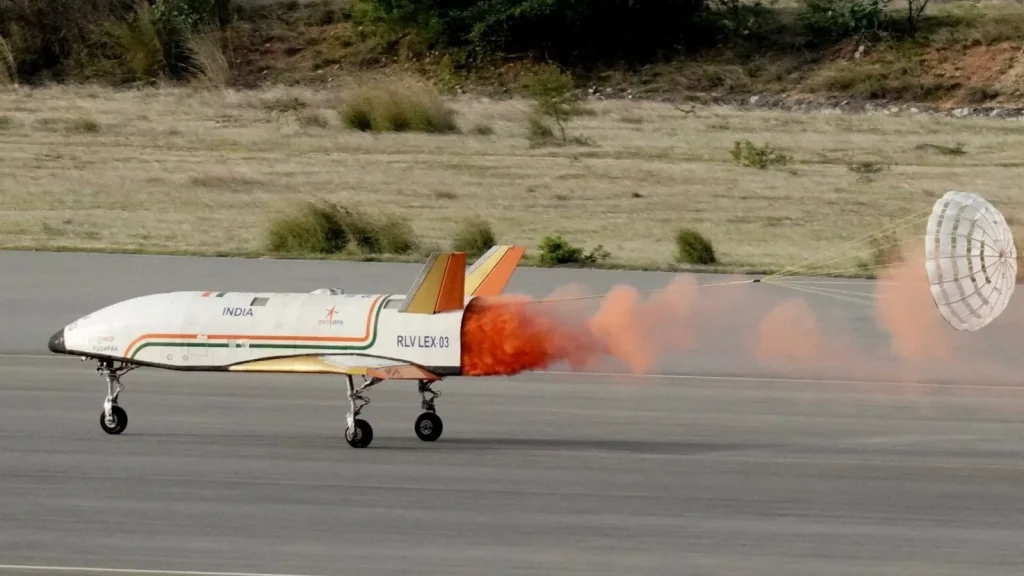The Indian Space Research Organisation (ISRO) conducted the third landing experiment of the Reusable Launch Vehicle (RLV LEX-03), named ‘Pushpak’. The test took place at 07:30 IST at the Aeronautical Test Range (ATR) in Chitradurga, Karnataka. The winged vehicle ‘Pushpak’ was released from an Indian Air Force Chinook Helicopter at 4.5 km altitude, successfully performing a precise horizontal landing and demonstrating advanced autonomous capabilities.

Mission Goals and Achievements
The RLV LEX-03 mission aimed to simulate the approach, landing interface, and high-speed landing conditions for a space-reentering vehicle. This mission demonstrated ISRO’s skill in developing key technologies for Reusable Launch Vehicle (RLV) systems. The mission also validated a sophisticated guidance algorithm crucial for future Orbital Re-entry Missions.
Technical Aspects of RLV LEX Mission ‘Pushpak’

- Autonomous Landing: Building on the achievements of previous RLV LEX missions, the RLV LEX-03 mission showcased the vehicle’s autonomous landing abilities under more challenging conditions.
- Precision: ‘Pushpak’ was deployed from a Chinook Helicopter at 4.5 km altitude, autonomously corrected its course, and landed accurately on the runway.
- High-Speed Landing: Due to its low lift-to-drag ratio, ‘Pushpak’ landed at a speed of over 320 kmph, higher than that of commercial and fighter aircraft.
- Deceleration: After landing, the vehicle’s speed was reduced to around 100 km h using a brake parachute, followed by landing gear brakes for further slowing.
- Stable Ground Roll: ‘Pushpak’ maintained a stable and precise ground roll using its rudder and nose wheel steering.
- Multisensor Integration: The RLV-LEX utilized a combination of sensors, including an Inertial sensor, Radar altimeter, Flush air data system, Pseudolite system, and NavIC.
- Reusability: The mission reused the winged body and flight systems from the previous LEX-02 mission, demonstrating ISRO’s ability to create reusable systems for multiple missions.
Collaborative Effort

The Vikram Sarabhai Space Centre (VSSC) led the mission, with collaboration from various ISRO centres such as SAC, ISTRAC, and SDSC-SHAR. The mission also received significant support from the Indian Air Force (IAF), Aeronautical Development Establishment (ADE), Aerial Delivery Research and Development Establishment (ADRDE), Regional Centre for Military Airworthiness (RCMA) under the Centre for Military Airworthiness and Certification (CEMILAC), National Aerospace Laboratories (NAL), Indian Institute of Technology, Kanpur, Indian aerospace industrial partners, Indian Oil Corporation of India, and the Airport Authority of India.
Future Prospects
S Unnikrishnan Nair, Director of VSSC, stated that the consistent success of these missions boosts ISRO’s confidence in the essential technologies for future orbital re-entry missions. With the RLV-LEX objectives met, ISRO is now advancing towards developing the RLV-ORV, the orbital reusable vehicle, marking a significant progression in India’s space exploration endeavours.
